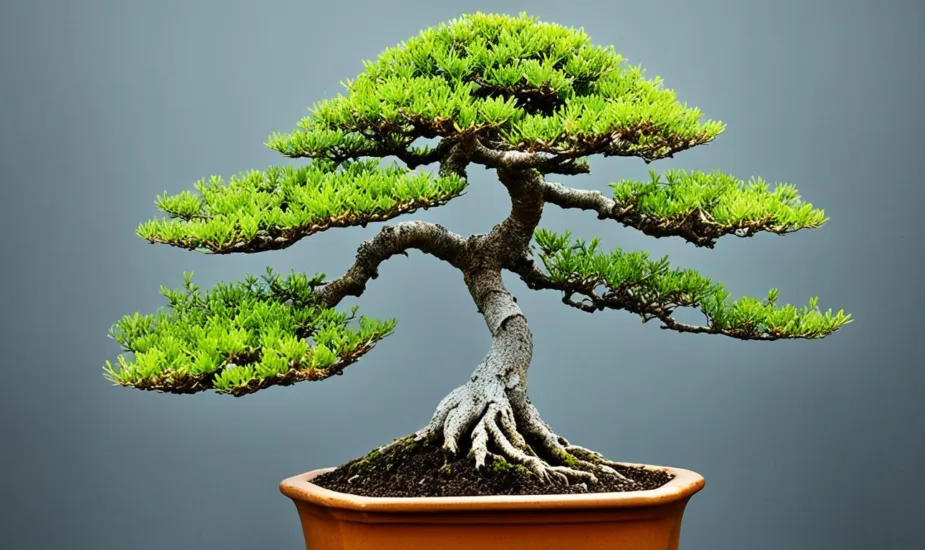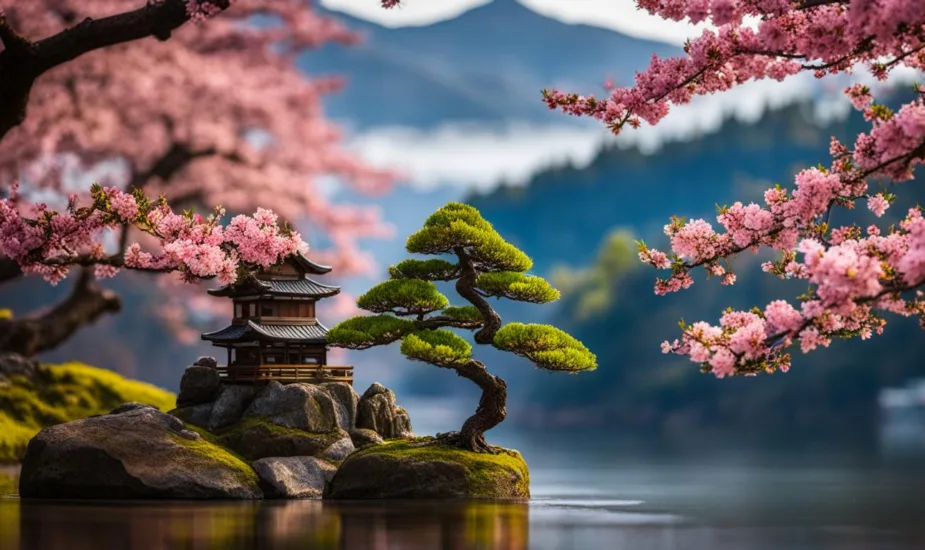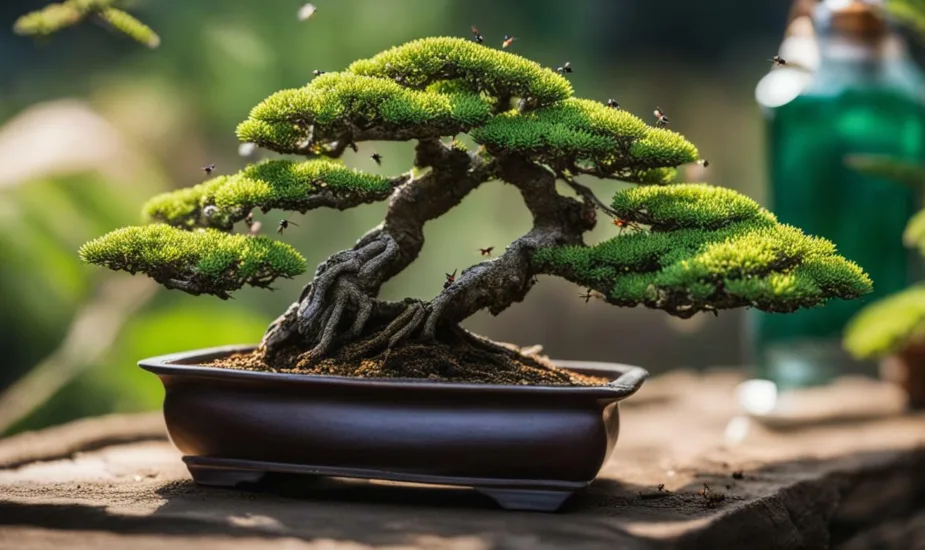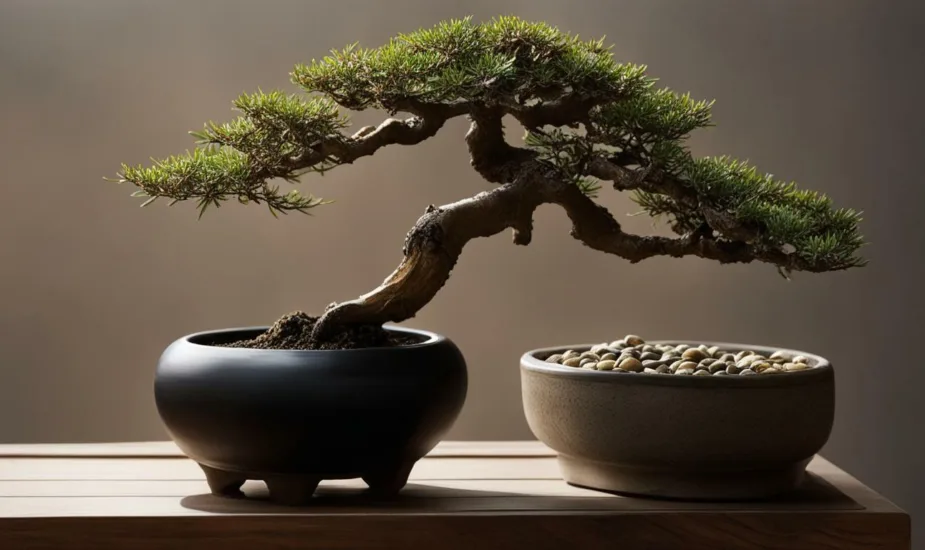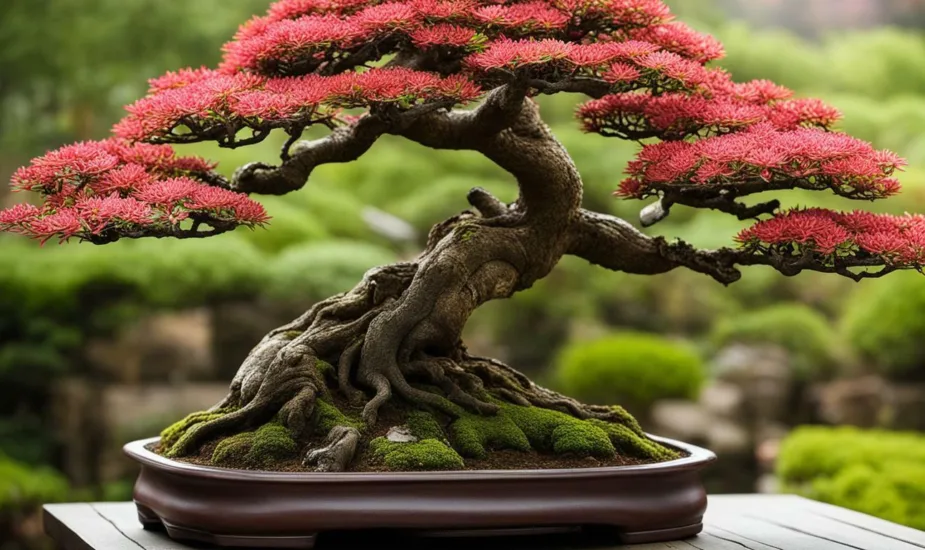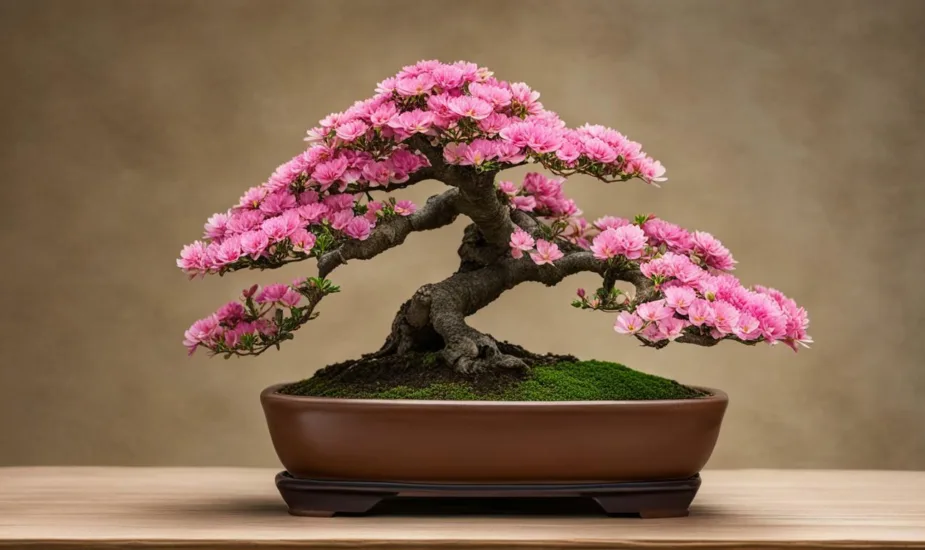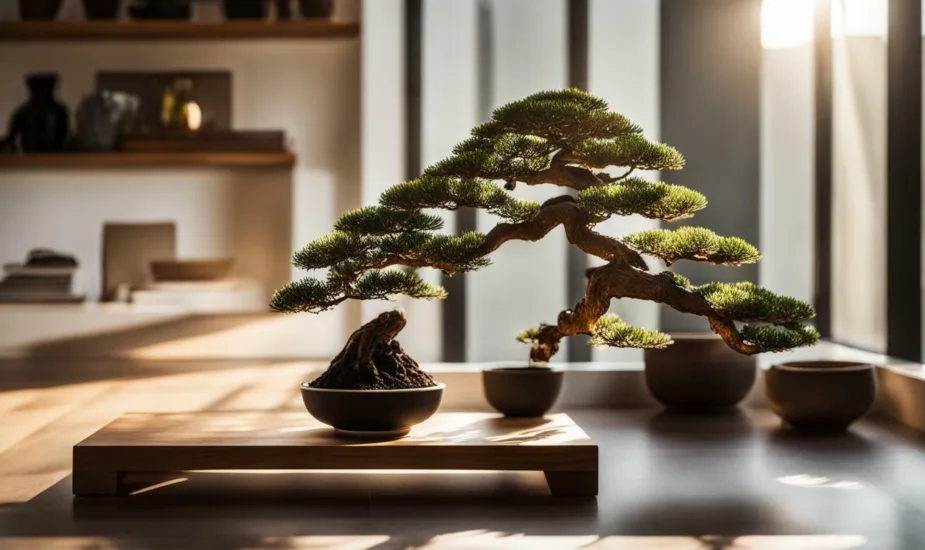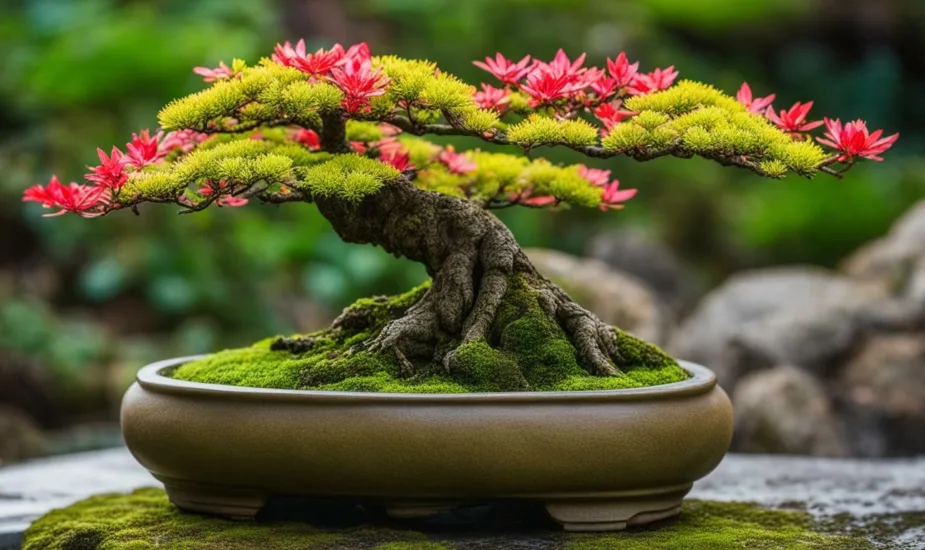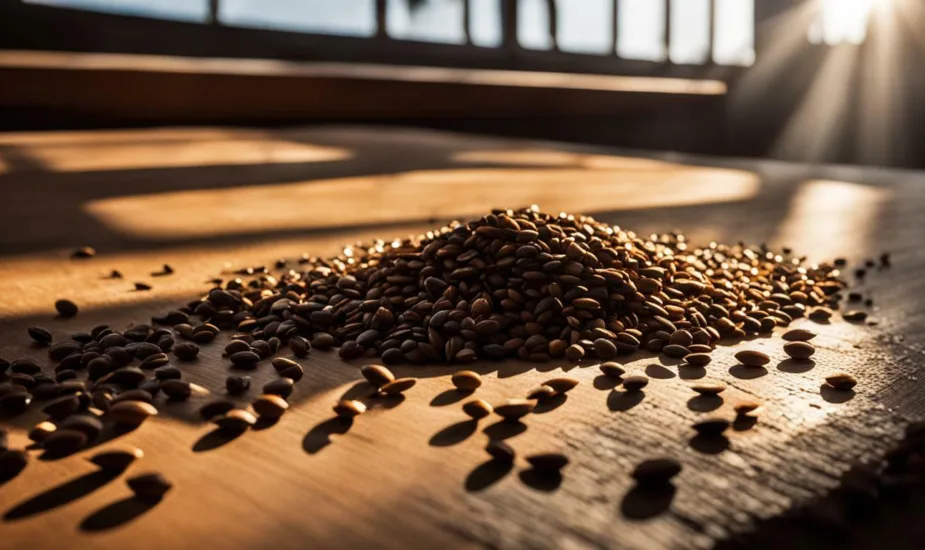From Novice to Expert: My Passion for Indoor Bonsai Trees

My Journey with Indoor Bonsai Trees
Introduction to My Passion for Indoor Bonsai Trees
Indoor bonsai trees have become a source of immense joy and fulfillment in my life. The art of cultivating these miniature trees has not only helped me connect with nature but has also provided a creative outlet for my gardening passion. In this section, I will share my personal journey and the deep-rooted love I have developed for indoor bonsai trees.
How I Started Growing Indoor Bonsai Trees
My fascination with bonsai trees began when I stumbled upon a captivating image of a beautifully pruned and sculpted bonsai tree online. The intricate details and unique form instantly captivated me. Intrigued by the artistry and cultivation techniques involved, I decided to embark on my own bonsai journey.
Starting with little knowledge, I began researching different bonsai tree species and their specific care requirements. This led me to discover the incredible diversity of indoor bonsai trees available, such as the Ficus, Juniper, and Chinese Elm. Each species possessed its own distinctive characteristics and growth patterns, making the selection process both exciting and challenging.
To ensure I started on the right path, I sought guidance from experienced bonsai enthusiasts and explored various online resources. I educated myself on the fundamentals of bonsai tree care, including watering, pruning, and shaping techniques. This knowledge equipped me with the necessary skills to embark on my bonsai adventure.
Overcoming Challenges and Learning from Mistakes
As with any new endeavor, I encountered my fair share of challenges along the way. From understanding the delicate balance of watering to ensuring proper light exposure, managing the health and aesthetics of my indoor bonsai trees required patience and perseverance.
I vividly remember the frustration I felt when my first bonsai tree experienced leaf drop and showed signs of distress. However, instead of giving up, I took it as an opportunity to learn. Through trial and error, I discovered the importance of proper watering techniques and the significance of maintaining appropriate humidity levels. Slowly but surely, my bonsai trees began to thrive, rewarding me with their graceful growth and vibrant foliage.
Each setback became a lesson, teaching me the intricacies of bonsai tree care. I learned to recognize the signs of overwatering, address nutrient deficiencies, and protect my trees from pests and diseases. Over time, I developed a deeper understanding of the unique requirements of each bonsai species, enabling me to provide tailored care for their individual needs.
My journey with indoor bonsai trees has been a continuous learning process. With every new experience, I gain a deeper appreciation for the artistry and dedication required to cultivate these miniature masterpieces. It is a rewarding journey filled with growth, both for the trees and for myself as a gardener.
In the next section, we will explore the fascinating world of indoor bonsai trees, delving into what makes them unique and the benefits they offer. Join me as we continue our exploration of this captivating art form. If you’re interested in learning more about bonsai tree species, check out our article on bonsai tree species.
The Fascinating World of Indoor Bonsai Trees
Indoor bonsai trees are a captivating and unique form of gardening that allows you to bring the beauty of nature into your home. These miniature trees, meticulously shaped and pruned, have captivated enthusiasts for centuries. In this section, I will explore what makes bonsai trees unique, the benefits of growing them indoors, and the different types of indoor bonsai trees available.
What Makes Bonsai Trees Unique
Bonsai trees are not simply small trees grown in pots; they are living works of art. The art of bonsai involves carefully cultivating and shaping a tree to resemble a mature tree in nature, but on a much smaller scale. This miniature size, along with the intricate and deliberate shaping, makes bonsai trees truly unique.
The artistry of bonsai lies in the ability to capture the essence of a full-sized tree in a small container. Each branch, leaf, and root is carefully pruned and trained to create a harmonious and balanced composition. The result is a living sculpture that evokes a sense of tranquility and natural beauty. To learn more about the specific types of bonsai tree species, visit our article on bonsai tree species.
Benefits of Growing Indoor Bonsai Trees
Growing indoor bonsai trees offers a range of benefits for both the gardener and the space they inhabit. Here are a few advantages of cultivating these miniature trees indoors:
- Aesthetically Pleasing: Indoor bonsai trees bring a touch of nature and serenity into any living space. Their unique shapes, textures, and colors create a visually appealing focal point that can enhance the ambiance of a room.
- Stress Relief: Caring for and tending to bonsai trees can be a calming and therapeutic experience. The act of pruning, shaping, and nurturing these trees can help reduce stress and promote a sense of mindfulness.
- Indoor Air Quality: Bonsai trees contribute to improved indoor air quality by releasing oxygen and absorbing harmful pollutants. This can have a positive impact on your overall well-being and create a healthier living environment.
- Learning and Creativity: Growing bonsai trees indoors allows you to learn about horticulture, tree biology, and the art of bonsai itself. It provides an opportunity for creative expression as you shape and design your tree according to your own vision.
The Different Types of Indoor Bonsai Trees
There is a wide variety of bonsai tree species suitable for indoor cultivation. Each species has its own unique characteristics, growth habits, and care requirements. Here are a few popular options:
| Bonsai Tree Species | Description |
|---|---|
| Ficus | Known for their glossy leaves and ability to tolerate indoor conditions. They are relatively easy to care for, making them a great choice for beginners. |
| Juniper | Juniper bonsai trees have a distinctive, rugged appearance with needle-like foliage. They thrive in outdoor environments but can also adapt well to indoor settings with proper care. |
| Chinese Elm | Chinese Elm bonsai trees feature small, serrated leaves and a graceful, twisting trunk. They are highly adaptable and can tolerate a variety of indoor conditions. |
| Jade | Jade bonsai trees have thick, fleshy leaves and a unique, gnarled trunk. They are known for their resilience and can withstand periods of neglect. |
When selecting an indoor bonsai tree, consider factors such as light requirements, temperature preferences, and your level of experience as a gardener. It’s important to choose a species that aligns with your specific needs and the conditions of your living space. For more information on caring for indoor bonsai trees, visit our article on bonsai tree care.
Indoor bonsai trees offer a captivating and rewarding gardening experience. Their unique beauty, combined with the benefits they bring to your home, make them a wonderful addition to any indoor space. Whether you’re a beginner or an experienced gardener, exploring the world of indoor bonsai trees is sure to ignite your passion for this art form.
Getting Started with Indoor Bonsai Trees
As someone who is passionate about indoor bonsai trees, I understand the excitement and curiosity that comes with starting this rewarding hobby. In this section, I will guide you through the initial steps of getting started with indoor bonsai trees, including choosing the right tree for you, gathering essential tools and supplies, and creating the perfect indoor environment for your bonsai.
Choosing the Right Indoor Bonsai Tree for You
When it comes to selecting an indoor bonsai tree, there are several factors to consider. First and foremost, choose a tree species that suits your skill level and matches the indoor conditions of your home. Some beginner-friendly bonsai tree species include the Ficus, Chinese Elm, and Juniper. For a more comprehensive list of bonsai tree species, visit our article on bonsai tree species.
Additionally, consider the aesthetic appeal and personal preference. Bonsai trees come in various shapes, sizes, and styles, each with its own unique charm. Take your time exploring different options and find a tree that resonates with you.
Essential Tools and Supplies for Indoor Bonsai Care
To properly care for your indoor bonsai tree, there are a few essential tools and supplies you will need. These include:
- Bonsai Pruning Shears: These specialized shears are designed for precise pruning and shaping of your bonsai tree. They allow you to trim branches and foliage with ease, promoting healthy growth and maintaining the desired form.
- Bonsai Wire: Bonsai wire is used to shape and train branches, giving your bonsai tree its distinctive look. It is available in different thicknesses, so choose the appropriate gauge for your tree’s branches.
- Bonsai Soil: Bonsai trees require a well-draining soil mix that provides adequate nutrients. Look for a bonsai soil mix specifically formulated for indoor bonsai trees. Avoid using regular potting soil, as it tends to retain too much moisture.
- Watering Can: A watering can with a narrow spout allows you to water your bonsai tree gently and accurately, ensuring that the water reaches the roots without disturbing the soil.
- Misting Bottle: Indoor bonsai trees benefit from regular misting to maintain proper humidity levels. A misting bottle filled with clean water helps create a humid environment around your bonsai tree.
For a detailed guide on bonsai tree care and additional tools you may need, refer to our article on bonsai tree care.
Creating the Perfect Indoor Environment for Bonsai Trees
Creating the ideal indoor environment for your bonsai tree is essential for its health and growth. Here are a few factors to consider:
- Light: Most indoor bonsai trees thrive in bright, indirect light. Place your bonsai tree near a window that receives ample natural light throughout the day. If natural light is limited, consider using artificial grow lights to supplement the light requirements.
- Temperature and Humidity: Bonsai trees prefer a moderate climate. Keep your bonsai tree away from extreme temperature fluctuations, such as drafts from air conditioning or heating vents. Maintain a humidity level of around 50% by using a humidity tray or regularly misting the foliage.
- Air Circulation: Good air circulation helps prevent stagnant air and encourages healthy growth. Avoid placing your bonsai tree in areas with poor ventilation, such as closed-off rooms or corners.
By carefully selecting the right indoor bonsai tree, gathering the necessary tools and supplies, and creating an optimal indoor environment, you are well on your way to nurturing a thriving bonsai. For guidance on where to find beginner bonsai trees and reputable bonsai nurseries, refer to our article on beginner bonsai trees. Remember, patience and dedication are key to cultivating and enjoying the beauty of indoor bonsai trees.
Nurturing and Maintaining Indoor Bonsai Trees
Caring for indoor bonsai trees requires attention to detail and a deep understanding of their unique needs. To ensure the health and longevity of your indoor bonsai trees, it’s important to focus on key aspects of their maintenance, such as watering and humidity control, pruning and shaping techniques, and fertilizing and repotting guidelines.
Watering and Humidity Control
Proper watering is crucial for the well-being of your indoor bonsai trees. The frequency and amount of water required depend on factors like the species, pot size, and environmental conditions. As a general rule, it’s essential to water your bonsai tree when the top inch of the soil feels slightly dry. Avoid overwatering, as it can lead to root rot and other issues.
Maintaining the right humidity levels is also vital for the health of your indoor bonsai trees. Bonsai trees, especially those native to humid regions, benefit from increased humidity. You can increase humidity levels by placing a humidity tray filled with water under your bonsai tree or by using a room humidifier. Regularly misting the foliage can also help provide a humid environment.
Pruning and Shaping Techniques
Pruning and shaping are essential techniques for maintaining the desired form and aesthetics of your indoor bonsai trees. Regular pruning helps control growth, improves branch structure, and enhances overall tree health. Use clean, sharp tools to make precise cuts and avoid damaging the tree.
When pruning, focus on removing dead or diseased branches, as well as any excessive growth or crossing branches that may disrupt the tree’s shape. Additionally, selective pruning can encourage branching and denser foliage.
Shaping your indoor bonsai tree involves careful wiring and training of branches. Use bonsai wire to gently guide branches into the desired position. Be mindful of the wire cutting into the bark and adjust or remove it as needed. It’s important to monitor the wired branches regularly and remove the wire before it leaves marks or causes damage.
Fertilizing and Repotting Guidelines
Fertilizing your indoor bonsai trees is essential to provide them with the necessary nutrients for healthy growth. Use a balanced, slow-release bonsai fertilizer or a liquid fertilizer diluted according to the manufacturer’s instructions. Apply the fertilizer during the growing season, typically from spring to early autumn, and reduce or stop fertilization during the dormant period.
Repotting your indoor bonsai tree is necessary to promote root health and prevent the tree from becoming root-bound. It’s typically recommended to repot every two to three years, depending on the tree’s growth rate and the condition of the root system. Repotting involves carefully removing the tree from its current pot, trimming the roots, and repotting it in fresh bonsai soil. For detailed repotting guidelines, refer to our article on bonsai tree care.
By following these nurturing and maintenance practices, you can ensure that your indoor bonsai trees remain healthy and thrive for years to come. Remember to research specific care requirements for the bonsai tree species you own, as care techniques can vary. If you’re looking to expand your collection, consider exploring beginner bonsai trees that are more forgiving for novice gardeners. For those interested in outdoor bonsai trees, our article on outdoor bonsai trees provides valuable insights.
Troubleshooting Common Issues
As an enthusiast of indoor bonsai trees, I have encountered my fair share of challenges along the way. In this section, I will share some tips on dealing with pests and diseases, addressing overwatering and underwatering, and reviving a neglected or unhealthy bonsai tree.
Dealing with Pests and Diseases
Pests and diseases can pose a threat to the health and vitality of your indoor bonsai trees. It’s important to be vigilant and address these issues promptly to prevent further damage. Here are some common pests and diseases you may encounter:
| Pest/Disease | Symptoms | Treatment |
|---|---|---|
| Aphids | Small, green or black insects on leaves and stems | Remove by hand or use insecticidal soap |
| Spider Mites | Fine webbing, yellowing leaves, and small dots on leaves | Rinse foliage and use insecticidal soap or neem oil |
| Fungal Infections | Spots, discoloration, and wilting of leaves | Prune affected areas and apply a fungicide |
| Root Rot | Yellowing leaves, wilting, and foul odor | Improve drainage and repot in fresh, well-draining soil |
Regularly inspect your bonsai trees for any signs of pests or diseases. If you notice any issues, take immediate action to prevent the problem from spreading. For more detailed information on bonsai tree care, including pest and disease management, refer to our article on bonsai tree care.
Addressing Overwatering and Underwatering
Proper watering is crucial for the health of your indoor bonsai trees. Overwatering or underwatering can cause stress and lead to various problems. Here are some telltale signs of these watering issues and how to address them:
| Issue | Symptoms | Solution |
|---|---|---|
| Overwatering | Yellowing leaves, root rot, and wilting | Adjust watering frequency and improve drainage |
| Underwatering | Dry, brittle leaves, and soil pulling away from the pot’s edge | Increase watering frequency and ensure thorough hydration |
To determine the watering needs of your bonsai tree, check the moisture level of the soil by inserting your finger about an inch deep. If the soil feels dry, it’s time to water. However, avoid overwatering, as it can lead to root rot. For more information on bonsai tree care, including watering techniques, visit our article on bonsai tree care.
Reviving a Neglected or Unhealthy Bonsai Tree
Sometimes, despite our best efforts, bonsai trees can become neglected or unhealthy. However, with proper care and attention, you can revive them. Here are some steps to help you bring your bonsai tree back to health:
- Assess the Current State: Examine the tree’s foliage, branches, and root system to identify the extent of the damage and determine the appropriate course of action.
- Prune and Shape: Remove dead or diseased branches, and reshape the tree to promote healthy growth and aesthetics.
- Address Watering and Nutrient Needs: Ensure proper watering and consider using a balanced fertilizer to provide essential nutrients.
- Repotting: If necessary, repot the bonsai tree using fresh, well-draining soil to improve its overall health.
- Patience and Care: Monitor the tree closely, provide consistent care, and be patient as it recovers and regains its vitality.
Remember, reviving a neglected or unhealthy bonsai tree requires time and effort. Don’t hesitate to seek guidance from a reputable bonsai tree nursery or consult resources specific to the species of your bonsai tree. For beginners, it’s advisable to start with beginner bonsai trees that are more forgiving and easier to care for. If you’re interested in outdoor bonsai trees, check out our article on outdoor bonsai trees for more information.
By addressing common issues such as pests, diseases, watering imbalances, and reviving neglected trees, you can ensure the continued health and beauty of your indoor bonsai trees. With proper care and attention, your bonsai trees will thrive and bring you joy for years to come.
 Little Garden Tips
Little Garden Tips




